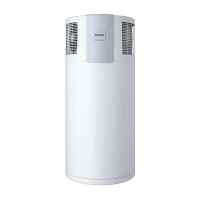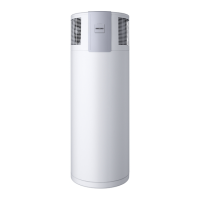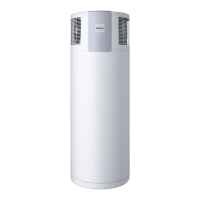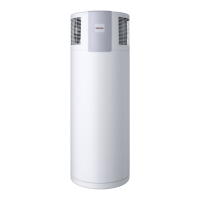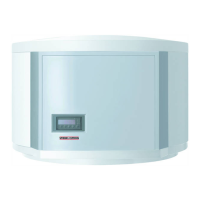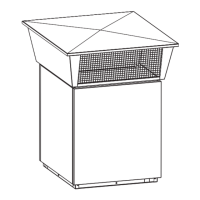INSTALLATION
Preparation
www.stiebel-eltron.com WWK 223-303 electronic | 17
ENGLISH
D0000034797
1
1 Recessed grips
Transport from vehicle to installation room
The cardboard box has reinforced recessed grips along the top.
You can use these recessed grips, as well as the pallet at the lower
end, to carry the appliance into the installation room. Take note
of the weight of the appliance and ensure a sufficient number of
personnel is available for handling the appliance.
9.2 Storage
If it is necessary to store the appliance for a prolonged period
before installation, observe the following information:
- Only store the appliance in a vertical position. Never store
the appliance horizontally.
- Store the appliance in a location that is dry and largely
dust-free.
- Protect the appliance from coming into contact with corrosive
substances.
- Ensure the appliance is not subjected to shocks or vibrations.
9.3 Installation site
!
Material losses
Observe the following list of requirements regarding the
installation site.
- As long as the appliance is not exposed to rain, snow or di-
rect insolation, it may be installed outdoors, e.g. under a car
port.
- Site the appliance where it will be well ventilated. Unhin-
dered air intake and air discharge should be possible. Protect
the appliance from the elements and strong wind.
- The installation site must be free from flammable, highly
combustible gases and substances, as well as high levels of
dust.
- The intake temperature of the appliance must be within the
permissible application limits (see chapter "Specification/
Data table").
- The floor of the installation room must be level and have
sufficient load bearing capacity. Take note of the weight of
the appliance with a full DHW cylinder (see "Specification/
Data table"). A floor with insufficient load bearing capacity is
in danger of collapse. If the appliance is not evenly balanced,
there may be a risk of appliance damage.
- The size of the installation room must correspond to the
appliance application limits (see "Specification/ Data table"
chapter).
- Observe the safety clearances and protection zones.
- Always leave sufficient space to provide access for instal-
lation, maintenance and cleaning. Observe the minimum
clearances (see chapter "Installation/ Preparations/ Siting
the appliance").
- Observe the requirements concerning the installation room
(see chapter "Specification/ Data table").
- The connection to the power supply must be in the form of
a permanent connection. Ensure the appliance can be sepa-
rated from the power supply by an isolator that disconnects
all poles with at least 3mm contact separation. This require-
ment can be met by contactors, isolators, fuses, etc.
- Observe the safety measures to prevent contact with danger-
ous 'live' currents.
- Observe the fuse protection required for the appliance (see
chapter "Specification/ Data table").
- The power cable must only be replaced (for example if dam-
aged) by a qualified contractor authorised by the manufac-
turer (connection typeX).
- The appliance is pressurised. During the heat-up process,
expansion water will drip from the safety valve.
- Regularly activate the safety valve to prevent it from becom-
ing blocked, e.g. by limescale deposits.
- Drain the appliance as described in chapter "Installation/
Maintenance and cleaning/ Draining the cylinder".
- Install a type-tested T&P valve using the corresponding con-
nection on the appliance.
- Install a type-tested safety valve in the cold water inlet line.
- The maximum pressure in the cold water supply line must
be at least 20% below the response pressure of the safety
valve. If the maximum pressure in the cold water supply line
is higher, install a pressure reducing valve.
- Fit the drain pipe of the safety valve with a constant fall and
ensure that it is free from the risk of frost.
- Size the drain pipe so that water can drain off unimpeded
when the safety valve is fully opened.
- Ensure the operation of other equipment in the installation
room is not impaired.
- To keep the duct lengths as short as possible, we recommend
installing the appliance close to the kitchen or bathroom.
- To prevent adverse effects from operating noise, never install
the appliance close to bedrooms.
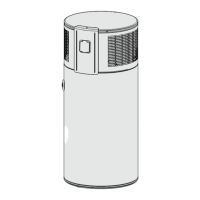
